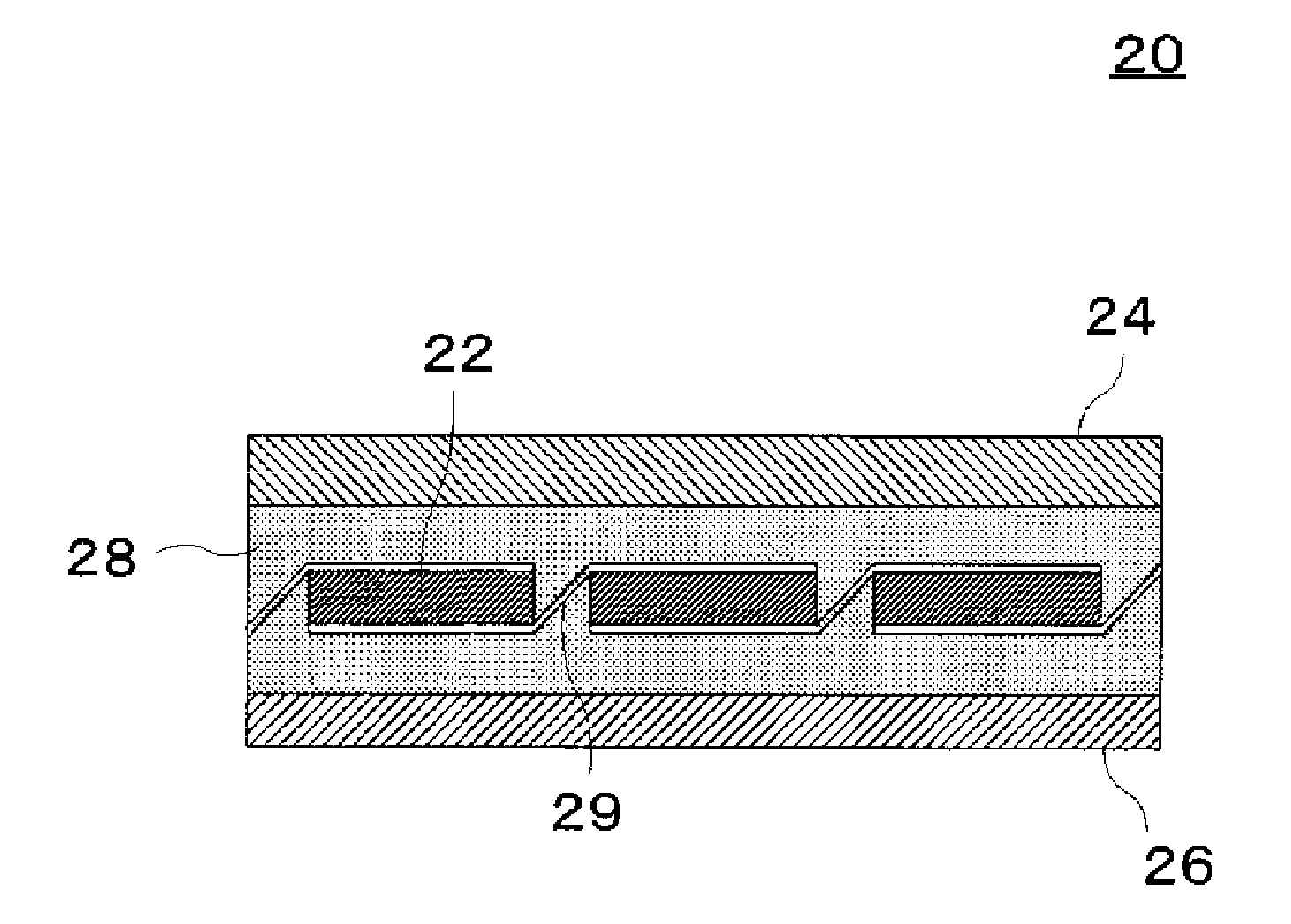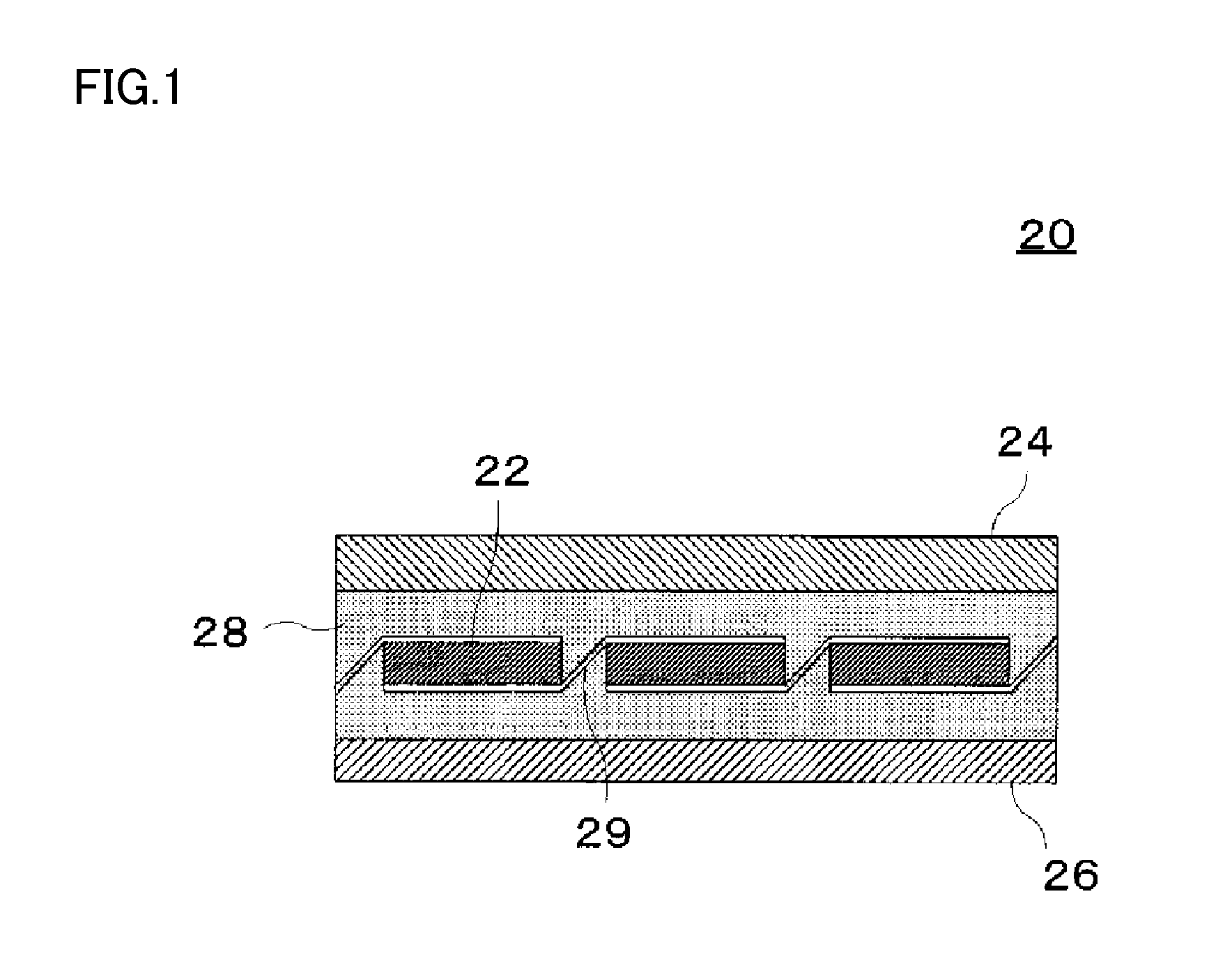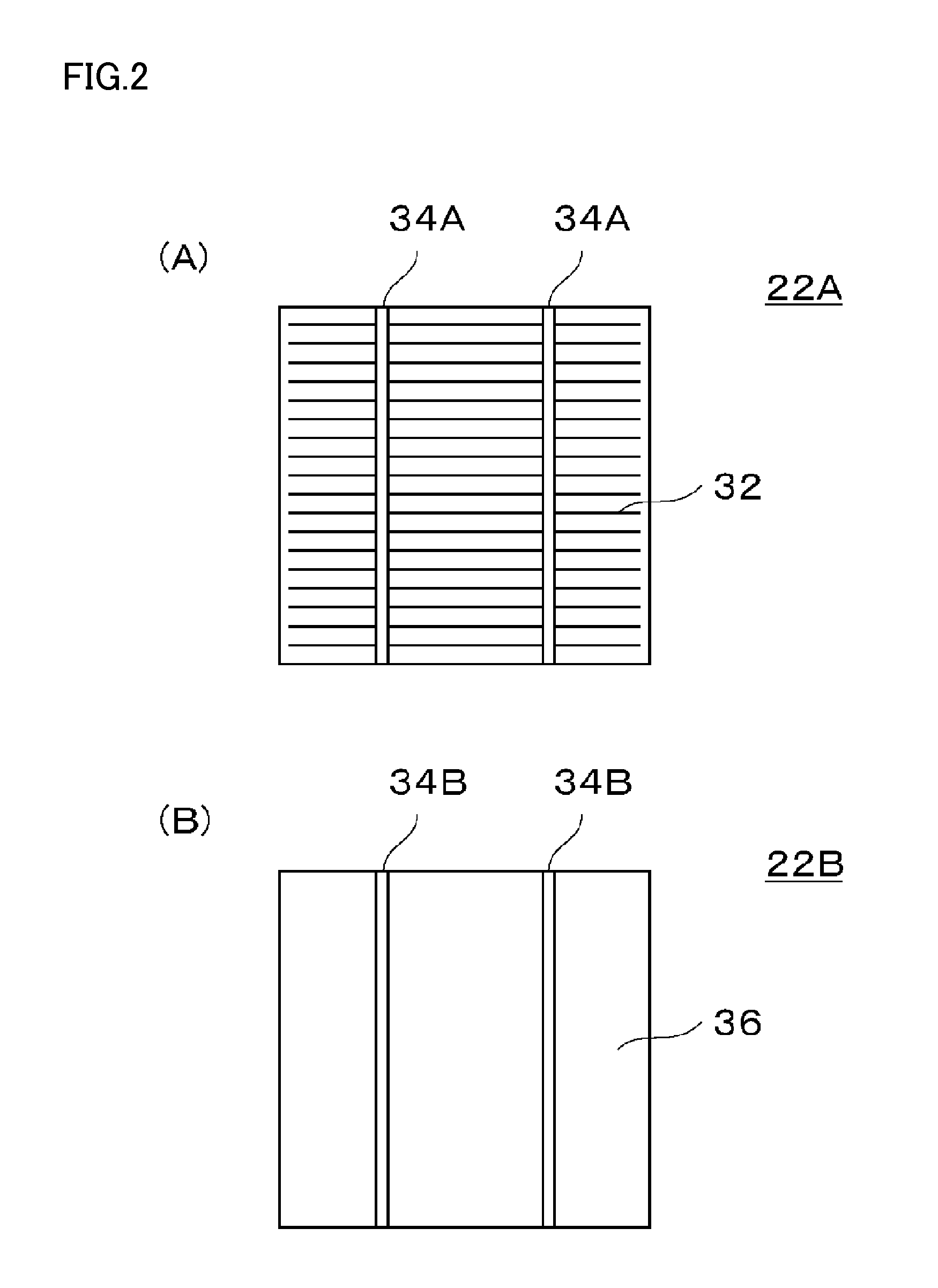Encapsulating material for solar cell and solar cell module
a solar cell and module technology, applied in the direction of basic electric elements, electric devices, coatings, etc., can solve the problems of glass substrates deformation or breakage, increased distortion caused by crosslinking, and insufficient crosslinking properties, so as to achieve excellent economic efficiency and avoid damage to the appearance of the solar cell
- Summary
- Abstract
- Description
- Claims
- Application Information
AI Technical Summary
Benefits of technology
Problems solved by technology
Method used
Image
Examples
synthesis example 1
[0278]Into one supply port of a continuous polymerization reactor having an interior volume of 50 L equipped with a stirring blade were fed a toluene solution of methyl aluminoxane at a rate of 8 mmol / hr as a cocatalyst, a hexane slurry of bis(1,3-dimethylcyclopentadienyl)zirconium dichloride at a rate of 0.025 mmol / hr as a main catalyst and a hexane solution of triisobutylaluminum at a rate of 0.6 mmol / hr as a main catalyst, and there was continuously fed normal hexane which was purified by dehydration such that the total amount of a catalyst solvent and a polymerization solution was 20 L / hr. At the same time, into another supply port of the polymerization reactor were continuously fed ethylene at a rate of 3 kg / hr, 1-butene at a rate of 15 kg / hr and hydrogen at a rate of 1.5 NL / hr. Continuous solution polymerization was carried out under the conditions of a polymerization temperature of 90 degrees centigrade, a total pressure of 3 MPaG and a retention time of 1.0 hour. A normal he...
synthesis example 2
[0279]An ethylene / α-olefin copolymer was obtained in the same manner as in Synthesis Example 1 described above, except that there were fed a hexane solution of [dimethyl(t-butylamide)(tetramethyl-η5-cyclopentadienyl)silane]titanium dichloride at a rate of 0.012 mmol / hr as a main catalyst, a toluene solution of triphenylcarbenium(tetrakispentafluorophenyl)borate at a rate of 0.05 mmol / hr as a cocatalyst and a hexane solution of triisobutylaluminum at a rate of 0.4 mmol / hr respectively, and at the same time there were fed 1-butene at a rate of 5 kg / hr and hydrogen at a rate of 95 NL / h. The yield was 1.3 kg / hr. Physical properties are shown in Table 1.
synthesis example 3
[0280]An ethylene / α-olefin copolymer was obtained in the same manner as in Synthesis Example 1, except that there were fed a hexane solution of bis(p-tolyl)methylene(cyclopentadienyl)(1,1,4,4,7,7,10,10-octamethyl-1,2,3,4,7,8,9,10-octahydrodibenzo(b,h)-fluorenyl)zirconium dichloride at a rate of 0.003 mmol / hr as a main catalyst, a toluene solution of methyl aluminoxane at a rate of 3.0 mmol / hr as a cocatalyst; there was fed ethylene at a rate of 4.3 kg / hr; there was fed 1-octene at a rate of 6.4 kg / hr instead of 1-butene; there was continuously fed normal hexane which was purified by dehydration such that the total amount of 1-octene, a catalyst solution and normal hexane purified by dehydration used as a polymerization solvent was 20 L / hr; there was fed hydrogen at a rate of 10 NL / hr; and the polymerization temperature was changed to 130 degrees centigrade. The yield was 4.1 kg / hr. Physical properties are shown in Table 1.
PUM
| Property | Measurement | Unit |
|---|---|---|
| Weight | aaaaa | aaaaa |
| Fraction | aaaaa | aaaaa |
| Percent by mass | aaaaa | aaaaa |
Abstract
Description
Claims
Application Information
 Login to View More
Login to View More - R&D
- Intellectual Property
- Life Sciences
- Materials
- Tech Scout
- Unparalleled Data Quality
- Higher Quality Content
- 60% Fewer Hallucinations
Browse by: Latest US Patents, China's latest patents, Technical Efficacy Thesaurus, Application Domain, Technology Topic, Popular Technical Reports.
© 2025 PatSnap. All rights reserved.Legal|Privacy policy|Modern Slavery Act Transparency Statement|Sitemap|About US| Contact US: help@patsnap.com



